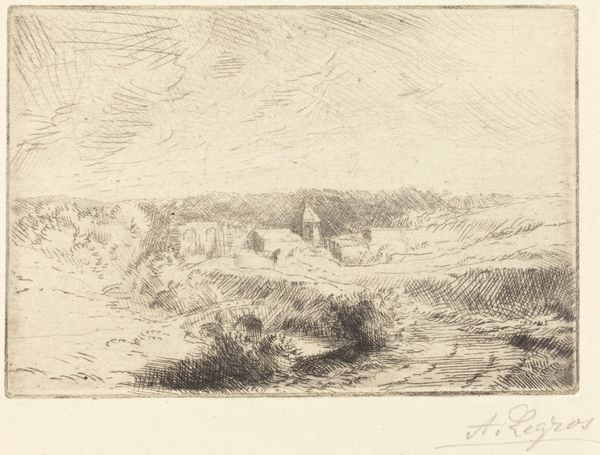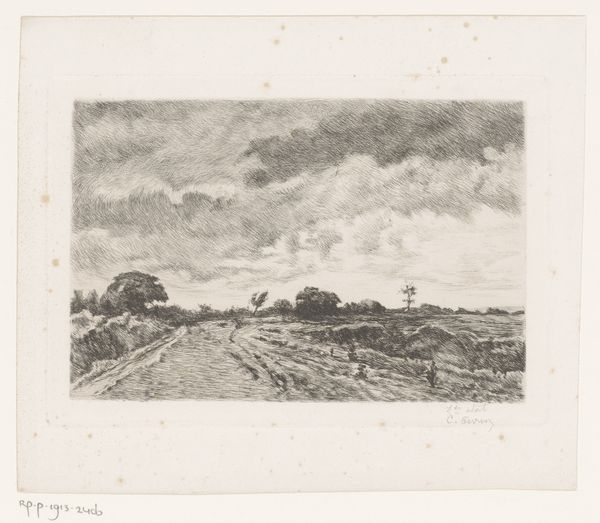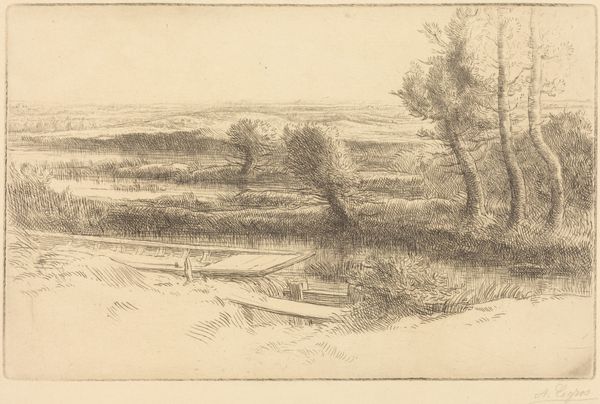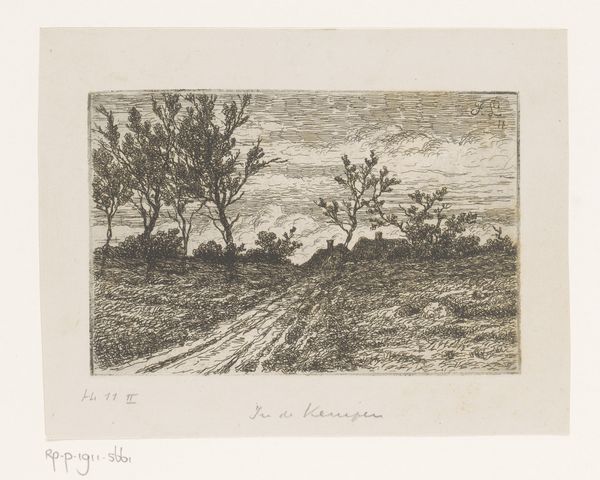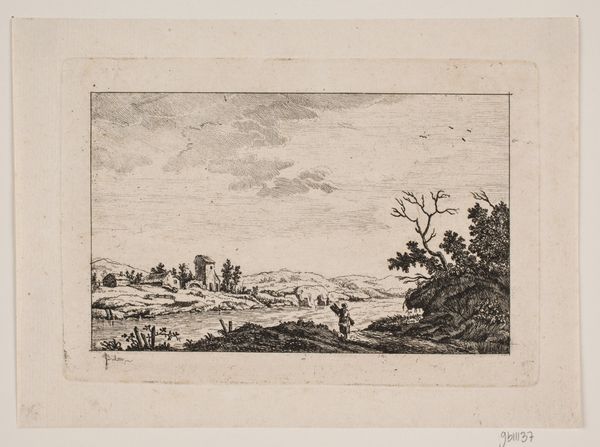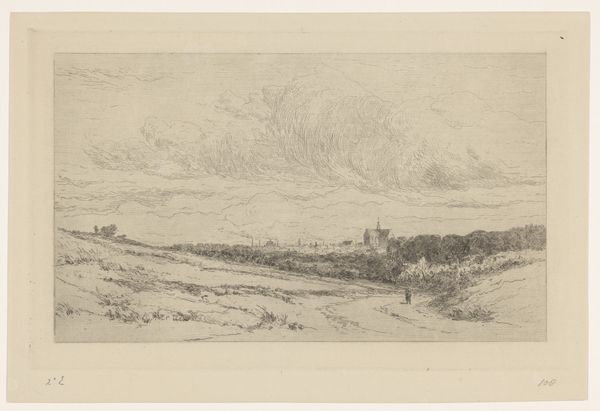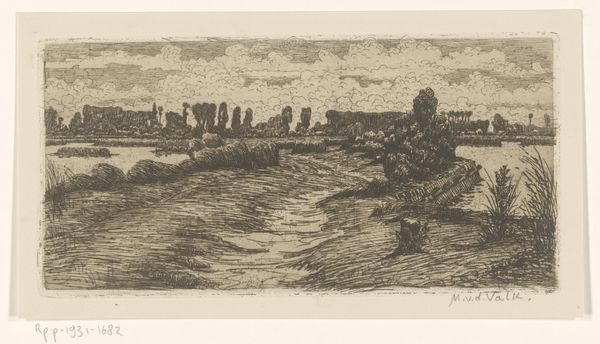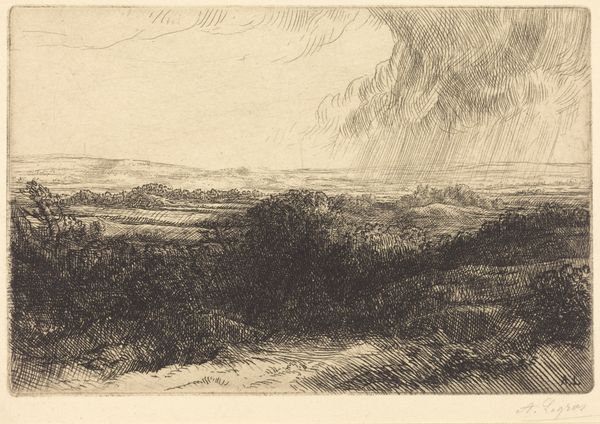
drawing, print, etching
#
drawing
# print
#
etching
#
landscape
#
line
#
realism
Dimensions: height 89 mm, width 223 mm
Copyright: Rijks Museum: Open Domain
Jean Pierre François Lamorinière created this landscape near Dinant using etching, a printmaking technique that democratized art production. The process begins with a metal plate, likely copper, coated with a waxy, acid-resistant ground. Lamorinière then draws through this ground with a sharp needle, exposing the metal. When the plate is immersed in acid, the exposed lines are bitten, creating grooves. Ink is then applied to the plate, filling these grooves, and the surface is wiped clean. Finally, the plate is pressed onto paper, transferring the ink and creating the print. The result is a delicate interplay of line and texture, capturing the subtle nuances of the landscape. The etched lines create a sense of depth and atmosphere, inviting the viewer to step into the scene. Prints like these allowed for wider access to art. The labor-intensive process is a testament to the artist's skill, yet the final product could be distributed more broadly than a unique painting, connecting art with a growing audience.
Comments
No comments
Be the first to comment and join the conversation on the ultimate creative platform.

